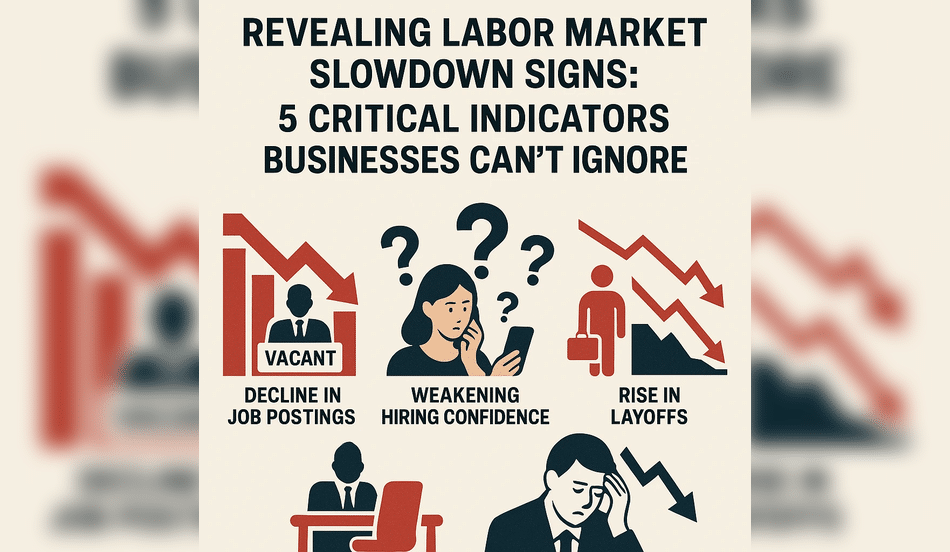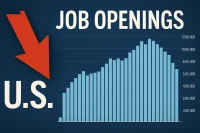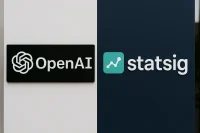In today’s seemingly robust economy, labor market slowdown signs are quietly emerging beneath the surface. While headline unemployment remains historically low, a deeper analysis reveals concerning shifts that savvy business leaders and investors must understand. This comprehensive examination explores the subtle yet significant indicators showing we’ve passed the labor market peak, what these labor market slowdown signs mean for the business cycle, and how they might impact your strategic planning in the months ahead.
The Deceptive Strength of Headline Numbers
At first glance, the US labor market appears remarkably resilient. Unemployment rates remain low by historical standards, job additions continue, and overall participation rates seem healthy. However, this surface-level view masks the labor market slowdown signs that economic analysts are increasingly detecting in the underlying data.
Beyond the Headlines: What’s Really Happening
The disconnect between headline figures and economic reality creates dangerous blind spots for business planning. While mainstream media continues reporting on labor market strength, key metrics reveal that momentum has clearly shifted. These labor market slowdown signs aren’t making headlines yet, but understanding them provides crucial forward-looking insights into where the economy is heading.
The Prime-Age Focus: Eliminating Demographic Noise
To accurately identify labor market slowdown signs, economists focus on the prime-age cohort (workers aged 25-54). This approach filters out distortions caused by demographic shifts like an aging population, providing clearer signals about genuine labor market dynamics. The data from this cohort tells a compelling story about where we stand in the economic cycle.
Five Critical Indicators Revealing Labor Market Weakness
The most telling labor market slowdown signs emerge when examining specific ratios that measure both employment levels and job quality. These metrics provide early warning signals before more obvious indicators like widespread layoffs become apparent.
1. Prime-Age Employment Rate Decline
The employment rate—the percentage of the labor force that’s employed—has declined sharply from its cycle peak. This labor market slowdown sign typically emerges early in economic downturns as companies begin slowing their hiring rather than implementing immediate layoffs. The current decline suggests building labor market slack even without headline-grabbing job cuts.
2. Stalling Employment-to-Population Ratio
The employment-to-population ratio measures employment relative to the entire prime-age population. This metric has stalled and is now trending lower, indicating that job creation is no longer outpacing population growth. This labor market slowdown sign suggests the economy’s ability to absorb workers has plateaued, even if widespread job losses haven’t materialized.
3. Flatlining Labor Force Participation
While labor force participation surged in recent years as workers re-entered the workforce post-pandemic, it has now flatlined just below its cycle high. This labor market slowdown sign reveals a growing mismatch: labor supply remains relatively stable, but labor demand is weakening. The result is an increasingly unbalanced labor market dynamic.
Deteriorating Job Quality Metrics
The most concerning labor market slowdown signs appear in metrics measuring job quality, revealing cracks that typically precede more severe downturns.
4. Rising Part-Time for Economic Reasons
The ratio of people working part-time for economic reasons (those who want full-time work but can’t find it) as a percentage of all employed people is increasing. This labor market slowdown sign indicates that workers are increasingly settling for part-time positions when they desire full-time employment—a classic indicator of deteriorating labor market conditions.
5. Declining Full-Time Employment Ratio
The full-time employment ratio—measuring people working full-time as a share of the entire labor force—is declining from pandemic-era highs. This labor market slowdown sign demonstrates that employers are systematically reducing labor intensity, a typical late-cycle behavior as companies manage costs in response to slowing growth.

Why Companies Are Delaying Layoffs
Unlike previous cycles, these labor market slowdown signs have persisted for nearly two years without triggering widespread layoffs. This unusual pattern deserves explanation.
The Profit Margin Buffer
According to research from The Conference Board, many companies entered this slowdown with historically high profit margins. Taking the residential construction sector as an example, major US homebuilders saw profit margins expand from pre-pandemic levels of 10% to peaks of 19%, before moderating to around 15%—still well above historical norms.
The Strategic Middle Ground
This profit cushion allows businesses to adopt a middle-ground approach: reducing labor intensity through hiring freezes, limiting hours, and delaying backfills rather than implementing layoffs. As noted in a recent Federal Reserve Economic Data (FRED) analysis, this strategy preserves operational flexibility while managing payroll expenses—but may not be sustainable indefinitely.
What These Signals Mean for the Business Cycle
Understanding these labor market slowdown signs provides valuable insights into where we stand in the economic cycle and what might come next.
The Classic Late-Cycle Setup
The five metrics collectively paint a consistent picture of classic late-cycle labor market dynamics. We haven’t entered a recessionary labor market yet, but there’s been a clear and sustained shift in labor demand, intensity, and employment growth. These are precisely the cracks that typically form before more widespread layoffs materialize.
The Quiet Phase Before Potential Disruption
Current conditions represent what economists call “the quiet phase”—where hiring slows and firms reduce hours without cutting headcount. This pattern of labor market slowdown signs often precedes more visible economic weakness, making it a crucial period for strategic planning and risk management.
Need Career Advice?
Are you navigating a changing job market? Understanding labor market slowdown signs can help you make better career decisions. Whether you’re considering a job change, negotiating compensation, or planning professional development, recognizing these economic shifts is essential. Explore career opportunities on WhatJobs to find positions aligned with your skills and market conditions.
Consider focusing on these recession-resistant career paths:
- Healthcare administration
- Cybersecurity
- Supply chain management
- Financial analysis
- Data science
- Regulatory compliance
Hiring During Economic Uncertainty?
Looking to build a resilient workforce despite emerging labor market slowdown signs? Post jobs for free with WhatJobs and connect with qualified professionals who can help your organization navigate changing economic conditions. Strategic hiring decisions now can position your company for strength regardless of where the economy heads next.
Implications for Business Strategy and Investment
The identification of these labor market slowdown signs has significant implications for business planning, investment decisions, and risk management.
Strategic Business Planning
Companies should consider how these labor market slowdown signs might impact their operations, hiring plans, and financial projections. Businesses that recognize these early warning signals can adjust strategies proactively rather than reactively.
Investment Implications
For investors, these labor market slowdown signs may signal important shifts in monetary policy, sector performance, and asset allocation. As noted by JPMorgan Asset Management, labor market conditions are a key input for Federal Reserve decision-making, potentially influencing interest rates and broader market dynamics.
The Importance of Forward-Looking Analysis
Rather than focusing exclusively on lagging indicators or headline numbers, business leaders and investors benefit from understanding these leading labor market slowdown signs. This forward-looking approach provides valuable time to adjust strategies before more severe economic conditions potentially emerge.
Preparing for What Comes Next
While these labor market slowdown signs don’t guarantee an imminent recession, they do suggest we’re in a vulnerable phase of the economic cycle. Businesses and individuals who recognize these signals can position themselves advantageously for whatever economic conditions emerge.
Building Organizational Resilience
Companies can use this understanding of labor market slowdown signs to build greater operational flexibility, manage costs strategically, and identify growth opportunities that might emerge even in challenging conditions. This preparation creates competitive advantages regardless of whether the economy strengthens or weakens.
Individual Career Strategy
For workers, recognizing these labor market slowdown signs provides motivation to enhance skills, build emergency savings, and strengthen professional networks. These preparations prove valuable whether conditions deteriorate further or stabilize.
FAQ About Labor Market Slowdown Signs
What are the most reliable labor market slowdown signs to monitor?
The most reliable labor market slowdown signs include declining prime-age employment rates, stalling employment-to-population ratios, and deteriorating job quality metrics like increasing part-time work for economic reasons. These indicators often signal weakness before headline unemployment rates rise, providing early warning of potential economic challenges ahead.
How do labor market slowdown signs affect Federal Reserve policy?
Labor market slowdown signs significantly influence Federal Reserve decision-making on interest rates. When the Fed observes deteriorating labor quality metrics and declining employment ratios, they may become more inclined to cut interest rates to stimulate economic activity. Conversely, if these labor market slowdown signs reverse, the Fed might maintain higher rates to prevent economic overheating.
Why aren’t these labor market slowdown signs making headlines yet?
Most labor market slowdown signs aren’t widely reported because they’re subtle, technical, and don’t create dramatic headlines like mass layoffs or surging unemployment. Media outlets typically focus on simple metrics like the headline unemployment rate rather than nuanced indicators like the part-time for economic reasons ratio or prime-age employment-to-population figures. This creates an information gap that informed business leaders can leverage.
How long can companies maintain reduced labor intensity before implementing layoffs?
Historically, the period between initial labor market slowdown signs and widespread layoffs lasts 6-18 months, depending on economic conditions. In the current cycle, elevated profit margins have allowed companies to maintain this middle ground longer than usual. However, if profit margins continue compressing or economic conditions deteriorate further, more companies may transition from reducing hours to implementing actual workforce reductions.
What industries typically show labor market slowdown signs first?
Labor market slowdown signs often appear first in cyclical industries like construction, manufacturing, and retail. These sectors tend to be more sensitive to economic shifts and interest rate changes. Technology and business services often follow as companies reduce discretionary spending. Healthcare, education, and government employment typically show labor market slowdown signs later in the cycle, if at all.
How should job seekers adjust their strategy based on labor market slowdown signs?
Job seekers observing labor market slowdown signs should consider focusing on companies with stable business models, pursuing roles in essential business functions rather than growth-oriented positions, and potentially accepting strong offers quickly rather than extended negotiation. Building skills in areas with persistent talent shortages can also provide insulation from broader labor market slowdown signs and maintain career momentum even in challenging conditions.




